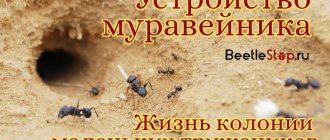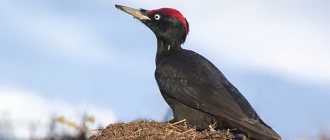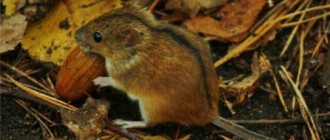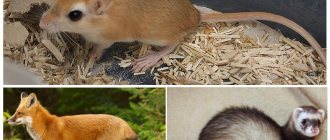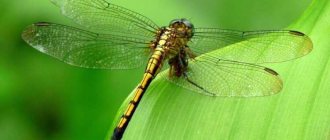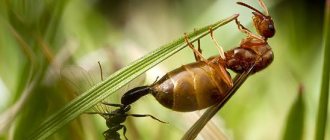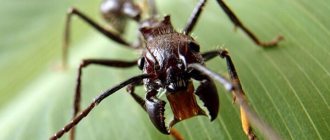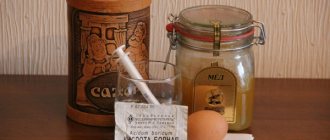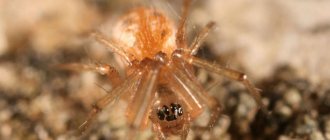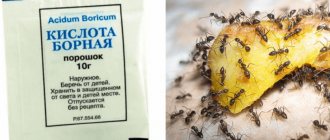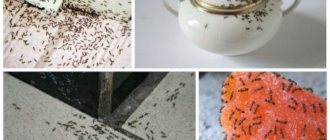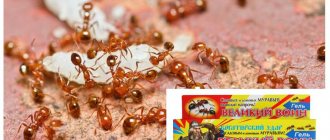Why do ants live less than what nature intended for them? Who is the main enemy of the ant? Destroyers of anthills. Birds, moles, fish, bears and other animals that love the snack in the form of ants.
Ants are tenacious insects that are difficult to get rid of even with the help of chemicals. Even a slipper with a light blow may turn out to be a powerless option, since these individuals are distinguished by the presence of a thick chitinous layer, which is very durable.
But they should not be considered immortal, since they have a large number of natural enemies in nature, who eat them with pleasure, and who warn them in the forest, field, meadow and other habitats. They can meet them both in a person’s private garden and in the wild. Let's figure out who the enemy is and who eats the ants.
Enemy classification
Despite the fact that insects bring great benefits in nature, their populations cause considerable harm to the crop, as well as to humans themselves.
They clean the forest, loosen the soil, pollinate plants and process waste. The ant itself is an invaluable source of carbohydrates and proteins, so for many animals this species is a real delicacy. In nature, there are many representatives of the animal world who prefer to feed on these tiny insects.
Enemies of ants are conventionally divided into 2 types:
- Internal. They enter the body of insects in various ways or are able to live with them in the same territory.
- External. These include representatives of the fauna that use ants as food.
Why are ants useful?
Ants provide aeration and soil movement in tropical and temperate forests. Many species of these insects loosen, mix and fertilize the soil. In areas with hot and dry climates, they increase yields.
Many species of ants are an important link in the food chain - they serve as food for many animals. In addition, individuals settling in dead wood participate in its mechanical destruction, thereby accelerating decomposition.
It is thanks to ants feeding on plant seeds that many species of flora successfully spread. For example, violet, hoofweed and woodland spread exclusively thanks to ants. These are the only insects capable of dispersing plant seeds in huge quantities, in all ecosystems and on all continents.
Ants are also record holders for capturing carbon dioxide from the atmosphere. Thanks to these insects, chalk, marble and limestone are converted into magnesium and calcium carbonate 50-300 times faster.
Ants are active predators. They destroy many insect pests. Among them are false caterpillars and caterpillars. And in China, weaver ants are actively used in growing citrus fruits - they help fight pests.
In South Africa, ants are used to harvest rooibos bushes (herbal tea). The fact is that during the fruitful period, rooibos scatters its seeds quite far. And black ants collect them and store them in a nest, from where people take them. One anthill contains up to 200 grams of seeds.
Medicinal ant bites
Ant bites can cause unpleasant consequences in some cases. But despite this, in medicine they are considered healing. It's all about formic acid. It contains zinc complex - an excellent antioxidant and immunostimulant. Among other things, formic acid protects the body from chronic diseases, atherosclerosis and the negative effects of free radicals.
Treatment procedure: you need to find an anthill in the forest, undress to your underwear, plug your ears with cotton wool, lower a prepared birch broom into the anthill and let the ants climb onto it, and then transfer the insects to yourself. The procedure is usually carried out for five minutes, after which all ants must be carefully shaken off. Complete the procedure with a warm shower.
It is important not to forget: the bites of some types of ants can cause anaphylactic shock and allergies. Before starting treatment in this way, you should check what type of insects will be involved in the procedure and monitor the body’s reaction to their secretion.
Little worker
We all watch in surprise and admiration as a tiny ant drags prey into its house, many times larger than itself. Everyone will envy their hard work and endurance. What is the role of ants in nature?
Beneficial activities of ants
Unexplored paths of little workers
How are ants useful? These insects are associated with a secret society. For millions of years, exchanging an encrypted language, they pave paths unknown to anyone. We are just beginning to know them today. At first glance, the activities of ants seem chaotic and useless. But is it? What benefits do ants bring to the forest and people?
Tiny soil formers
In the process of building their nests, ants loosen the soil, providing more air access to the roots of plants. But this favors their breathing.
This is especially necessary in places where there are heavy clay soil layers.
For example, an earthworm is active up to 20 cm deep, and a garden ant builds an underground house up to one and a half meters deep in 2-3 years with excellent aeration and humidity of more than 90%.
It is reliably known that thanks to the activity of these insects, the amount of potassium in the soil doubles, and phosphorus becomes ten times more. At the same time, it is they who promote the transition of these substances from an insoluble state to a soluble state available for plant nutrition.
Moreover, these insects enrich the soil with substances such as humus, potassium, nitrogen, improving its structure and increasing fertility.
The benefits of ants in seed dispersal
Small seed spreaders
Ants don't just make trails in search of food and building material for their castles. The ant crawls usefully. Do you know what benefits they have in expanding the flora? About 1% of plants, which is approximately 3,000 species, are spread by these insects.
Celandine, hairy gooseberry, goose onion, thyme, corydalis and many others are equipped with special appendages on their seeds that ants love to feast on. Carrying this delicacy home, they spread the seeds several tens of meters around. By the way, only ants spread fragrant violets.
Ant - forest orderly
By destroying dead insects, ants can rightfully be called nurse insects.
In the forest where anthills are located, there are no outbreaks of mass reproduction of insect pests: sawflies, spider mites, cutworms, slugs.
A medium-sized garden anthill can collect up to 2,000 larvae, eggs, caterpillars and other pests in one day. During the same period, the inhabitants of one forest anthill are able to eat more than 17,000 insects, protecting an area of 0.2 hectares.
Nebaiduzha detail of a forest landscape
Murakhi are forest nurses. It’s not for nothing that they are called that. The creepiness in the forest is on a global scale. Instantly following various kinds of larvae on the trees of the goosebump, the stinkers steal the forest from their massive reproduction.
In addition, the goosebumps affected by the disease do not disappear from the goosebumps, but die on their own.
Ant hydrometeorological center
Another feature that can be usefully used by people and borrowed from these insects is the ability to anticipate weather changes. They feel the storm. The day before they go into the anthill and close all the passages.
Ants as prey
The importance of ants in nature is not limited to their activities. They can benefit by sacrificing themselves. What are ants for?
Nutritious food for birds
Ants are food for forest dwellers
Ants are an important link in the food chain. They are a favorite treat for songbirds, badgers
Bears, foxes, black grouse, and hazel grouse feed on them.
Birds “bathe” in anthills, launching insects under their wings and crushing them on their feathers. In this way they eliminate parasites, and, possibly, are cured with formic acid.
Medicine for humans
Modern medical research has proven that many ailments can be prevented by eating ants for a long period of time.
Diseases such as atrophic arthritis, chronic hepatitis, neurosis, insomnia, even dizziness in older people are treated or alleviated by taking these insects.
Why are ants almost a panacea for these ailments? All thanks to proteins and microelements, which ants are rich in. They also contain a considerable amount of formic acid, used in medicine as a stimulant and astringent.
Hierarchy in an anthill
An anthill is a kind of society, almost democratic, in which everyone does their job depending on their status:
- Workers or foragers are required to deliver food, take care of all residents and protect their home from enemies; ants eat what they find when searching for food, as well as supplies in the colony itself.
- Queens - female ants that lay eggs, feed on the most delicious and necessary protein food.
- Males are intended to mate with a female, after which they die.
- The larvae are divided into 2 groups: some feed themselves, others need constant feeding, which is what all adults do, specially preparing food for them. Depending on the diet of the larvae in the future, after pupation, they become either workers or queens for the production of offspring.
Food
Ants are omnivorous insects. Their diet depends on the species and habitat.
During the warm season, food supply is carried out by worker ants daily. In cold weather, everything happens differently: many species of the ant family do not hibernate, and therefore in the fall they fill their home to capacity with food, this allows them to calmly survive the cold season.
REFERENCE! Ants love to drag into their home absolutely everything that gets in their way. And only then the food is distributed among the inhabitants of the anthill. To everyone's taste.
The distribution goes as follows:
- larvae. They feed on protein foods: the remains of small insects, eggs of various pests. If we are talking about domestic (pharaoh) ants, then the larvae often receive food from the table of the owners of the house (meat, eggs, cottage cheese, cheese), sometimes domestic cockroaches, which the younger generation also eats with pleasure, become the prey of the ants;
- worker ants. To maintain strength, they need carbohydrate foods that are nutritious, rich in energy and easily digestible. These are: the pulp of fruits and berries, seeds, nuts, roots and plant juices. Having settled in houses, they happily eat sugar and honey. The favorite delicacy of ants is honeydew (plant juice secreted by them during sudden temperature changes) and honeydew (sugar milk of aphids);
- uterus. The basis of her diet is protein. In many species, food intended for the queen is chewed by worker ants and supplied to their queen in a form convenient for consumption.
REFERENCE! For red forest ants, honeydew and dew make up almost 60% of the total diet.
They carefully guard aphids (milk cows), breed them on young shoots of trees, and take them with them to anthills for the winter.
Wildlife - who warns insects
All latitudes are characterized by the bloodthirstiness of the natural habitats of insects. Forests, clearings, steppes, banks of reservoirs - processes of eating each other take place everywhere. Ants are no exception in this chain.
Despite their small size, as well as their place of residence underground, they are always found.
Who considers ants a delicacy in the wild:
Bear
Although bears don’t really like to eat ants, if they are very hungry, then they don’t have to choose. They hunt as follows: the bear puts its claws inside the anthill, after which it licks off the insects that get there.
Jerzy
Hedgehogs, like mice, are quite omnivorous, so if they come across an anthill on their way, they can have a light snack.
Spiders
In rare cases, insects become food for spiders, but this can be considered the exception rather than the rule. This is explained by the fact that they are rarely caught in nets, and the spiders themselves try to avoid encounters with them, since their bodies contain acid that is strong enough for them.
Fish
Along with the rain, small debris, soil, leaves, grass and, of course, various insects are washed into the water, which immediately become prey to fish.
frogs
The main diet of the amphibian is considered to be the consumption of flies and mosquitoes. But in order to diversify their menu, sometimes they eat ants, and they catch them using their usual method - using their tongue.
Internal enemies of ants
The internal enemies of the ant population include some types of fungi, insects and helminths:
- Mushrooms of the genus Cordyceps infect, kill the insect, and the fruiting bodies of the fungi sprout from its body.
- Fanwings are insect parasites that use ant individuals to attract partners during mating.
- Humpback flies lay eggs in the body of a living individual. The developed larva decapitates the insect using a special enzyme.
- Blueberry butterfly larvae develop in ant nests. Caterpillars secrete the same odorous substances as ant larvae. Therefore, ants take care of them, and caterpillars feed on their pupae.
- Lomechusa beetle - with the help of a secreted drug, this parasite forces insects to feed and care for it more than for their offspring, and the anthill degenerates.
- The parasitic wasp Aphylanthops feeds its larvae with insect wings.
Ant quarantine
There is a lot to learn from ants besides mushroom growing, gardening and construction. In 2018, an experiment was conducted on black garden ants at the University of Lausanne. More than 2 thousand ants had a bar code glued to their backs and their movements were tracked using infrared cameras.
Several foraging ants were infected with a parasitic fungus, which has an incubation period of 2 days, and then it grows into the ant’s body, forms spores and disperses them around, infecting others. Ants are very social creatures, and they have limited spaces.
So, even before the first symptoms, the family moved the infected away from the anthill. They themselves stopped contacting healthy relatives. The sanitary measures did not end there: the nurse ants hid the eggs and larvae away, leaving only those who could not do without them to look after them. Everyone else also limited contacts to a minimum, dividing the responsibilities of the sick among themselves.
As a result, the infection did not reach the female, nannies and children.
Who eats ants in the middle zone
The most important anteater in our area is the clubfoot. The beast calmly destroys the anthill and licks hordes of goosebumps and their larvae from its furry paws. It’s not for nothing that people have a saying: you can’t feed an ant to a bear.
Moles and shrews, bumping into ant passages, destroy the little workers. But insects are not their main source of food. For animals, arthropods serve as a light snack.
On a note!
Rodents living in the forest can also feast on a passing ant, but they do not destroy anthills because they are afraid of numerous ant bites.
The frog eats ants along with other insects. She catches the hard worker with her sticky tongue and quickly swallows him.
Birds in gardens and forests feed on ants:
- sparrows;
- wrens;
- hazel grouse;
- wagtails;
- Bluethroats.
Woodpeckers are famous anteaters. They can smell the bugs hidden in the bark. The bird sweeps out the “forest orderlies” with its feathers and begins to quickly eat them.
Lifestyle
The life of different species of ants follows approximately the same scenario. Reproduction, search for food, construction of an anthill, defense against natural enemies - these are the main stages of ant life. The diet of red forest and black garden individuals differs from the food that their domestic counterparts require for normal life.
Ant larvae Fertilized females do not return to the anthill, but create their own nest. Ants have a complete development cycle. 14–21 days after laying the eggs, the larvae turn into pupae, and after another 4–6 weeks the first adults are born, after which the females gnaw off their wings.
The lifespan of these creatures depends on their role and occupation in the nest. A worker ant usually lives for about 3–5 years. The shortest lifespan is for individuals who care for the queen and larvae, the longest for those who are engaged in internal work in the anthill. The lifespan of a male ant is only 14–21 days. Male ants are called upon to perform only one function - reproduction. The queen, or queen, lives the longest - about 20 years.
These insects have settled across all continents and climatic zones. They are even found in the desert and Antarctica. Each species has its own habitat. Ants can even migrate between countries and continents, creating new colonies in places where they were not found before.
The behavior of these predatory insects regarding the search and distribution of food is standard. All the food they collect is brought to the nest, where it is distributed among all family members. In the fall, in order to have something to eat in the winter, these carnivorous creatures stockpile food. What insects eat depends on their specific species.
Unlike the food of street ants, their domestic counterparts eat food from the human table. A crumb of bread, a grain of sugar, a drop of butter - they destroy everything edible. House ants are also predators. They do not disdain any food: neither sausages, nor spicy dishes, nor dairy products.
Life of an anthill
These insects lead a collective lifestyle, living in colonies in anthills. Ant nests can be dug into the ground, placed under rocks, or built in the trunks of dead trees. They can be built not only in the forest, but also in the garden and in people's homes. Anthills, which are earthen mounds with branches, sticks, leaves, and pine needles, contain many entrances and exits.
We suggest you read: How many eyes does a spider have, where and why
Ants organize a family that is very similar to human society, where each worker has his own specialty. For example, builders participate in the construction of an anthill and maintaining it in good condition, soldiers protect the home from enemies. Scouts look for food, foragers bring food to relatives, nannies take care of the offspring, cleaners maintain order in the anthill. Some types of worker ants are engaged in breeding aphids, the secretions of which feed all the inhabitants of the anthill, and in growing mushrooms.
Social roles are not determined once and for all. The colony regulates both the number of individuals and the specific number of soldiers, scouts, etc. If there is a shortage of, say, foragers, some of the builders become foragers. The existence of the queen (queen), which may not be alone, also depends on the colony. It is the working individuals who decide where she will live and kill the queen who has ceased to produce sufficient offspring. An interesting fact is that all working individuals are infertile females who are unable to lay eggs.
There are several stages of insect development:
- eggs;
- larvae;
- pupae;
- imago.
Ant development stages
Ants live on all continents except the South and North Poles, Iceland and Greenland. They feel comfortable in the temperate climate of the middle zone, building their houses in forests and fields, underground, inside trees, under stones. In winter they hibernate, and life in the anthill freezes until spring.
Their diet is varied and includes proteins, vitamins and carbohydrates. The source of protein can be insects, their eggs and corpses, and dead animals. At home, ants prefer to feast on sugar and dairy products. They replenish the supply of carbohydrates in nature by feeding on honeydew (secretions of aphids), gum (exudate released by plants when damaged), plants, and mushrooms. Vitamins are obtained from plant seeds, nuts, and tree fruits. House ants happily eat bread crumbs, leftover eggs and gelatin.
Who eats ants in the tropics
The insects living here have developed more serious means of defense. Their stings contain poison, and their mandibles tightly cling to the skin of the enemy. But enemies of ants live here too.
The most famous anteater in the world. It belongs to the large anteater family. Each species belonging to this family feeds on hard-working arthropods:
- a giant anteater destroys ground anthills;
- the dwarf hunts mostly termites;
- The four-legged anteater can get goosebumps both on the ground and on a tree.
The body structure of these animals is adapted to destroy ants. Wide paws rake the nest, tough fur protects against bites, and a sticky tongue helps catch many bugs.
Interesting!
The anteater has poor eyesight. He searches for insects by smell.
In the tropics, anteaters are not the only animals that eat ants. They are also hunted by other animals:
- armadillos;
- wryneck;
- antbird;
- woodpecker.
The woodpecker, which lives in the Himalayas, catches ants with the help of a sticky tail, the feathers of which are stuck to their heads. The plumage of the bird itself is covered with foul-smelling resin.
An antcatcher is a bird that cannot fly. She deftly runs on the ground and hunts insects crawling on the ground.
There is even an anteater fish called the splasher. It knocks prey off the foliage with a short, sharp stream of water.
Although there are plenty of different hunters in nature, ants continue to be the most common on the globe. All this is thanks to a lifestyle where each individual works for the benefit of the entire family.
Red myrmica
Forest red ants
Forest red ants are real hard workers. This family is characterized by a clear distribution of responsibilities and division into castes.
Most of the colony are working individuals that perform different functions. They build the dome of the anthill, guard the entrances and exits, obtain food, monitor the cleanliness inside the home, prepare chambers for storing supplies for the winter, transport the bodies of dead relatives, and “milk” aphids.
The most honorable professions are nannies, midwives, and attendants for the queen. The ants roll the eggs, place them in the chambers, feed the larvae, keep the queen’s room clean, and deliver food to her. The queen does nothing but lay eggs.
Myrmica is a species of small red ants, about four to five centimeters long. The body has a color from yellow to red and brown. This species is most common in Eurasia. Such forest ants are often found in meadows and vegetable gardens, competing with the well-known black ones. An interesting fact is that they have mastered not only wild nature, but also urban landscapes.
However, the insects themselves are capable of an aggressive attack only if their anthill in the forest is damaged. Myrmikas build nests on the ground, under pebbles and in tree stumps and moss hummocks. Their families number from 10 to 12 thousand individuals. At the same time, there can be up to one hundred egg-laying females. Members of one family live in several nests, which are connected to each other not only by ground paths, but also by underground passages.
Small ants use their summer quarters to raise numerous larvae, pupae and root aphids.
Myrmics hunt small invertebrates, eat flower nectar, and grow colonies of aphids on plant roots. Scout ants search for food. Having found food, they leave scent trails, then return to the anthill for help and correctly lead out their fellows according to their own marks.
This type of ant is medium in size. But the red forest ant makes the greatest contribution to protecting forests from pests. Their significance is very great. Red ants are listed in the Red Book.
The insects build their homes in huge cone-shaped piles throughout the forest. The size of working ants reaches nine millimeters. They have a black belly and a brown head. They build an anthill from needles and small twigs. It may seem like randomly scattered garbage, but this is not the case at all. Imagine that even in the heaviest rains, the anthill does not get wet a bit, and all its internal passages remain intact and dry. The height of the ant house reaches seventy centimeters. And sometimes even one and a half meters. Insects usually begin to build on old stumps.
Anteater - description, structure. What does an anteater look like?
The sizes of anteaters vary depending on the species, so the largest giant anteater reaches two meters in length, and what is interesting is that half of its size is in the tail. Its weight is approximately 30-35 kg.
The smallest dwarf anteater is only 16-20 cm in length and weighs no more than 400 grams.
The anteater's head is small, but very elongated, and its length can be 30% of the length of its body. The anteater's jaws are practically fused together, so it is impossible for him to open his mouth wide, however, he does not need to do this. Like having teeth. Yes, anteaters literally have no teeth at all, but the lack of teeth is more than compensated for by the anteater’s long and muscular tongue, which stretches along the entire length of their muzzle and is a real source of pride for this animal. The length of the giant anteater's tongue reaches 60 cm, this is the longest tongue among all living creatures living on Earth.
The eyes and ears of anteaters are not large, but their paws are strong, muscular, and also armed with long and curved claws. These very claws are the only detail of their appearance that reminds of their relationship with sloths and armadillos. Anteaters also have a well-developed charm and can smell potential prey.
Anteaters also have rather long and, moreover, muscular tails, which have a useful application - with their help, anteaters can move through trees.
The giant anteater has long fur, especially on its tail, which gives it a broom-like appearance. But in other species of anteaters, the fur, on the contrary, is short and stiff.
Interesting facts about anteaters
- A typical voracious anteater can eat up to 30 thousand ants or termites in a day.
- Anteaters are not herd animals; they prefer to lead a solitary lifestyle, at most a family one. However, when in captivity they can play well with each other.
- Anteaters have a peaceful nature, which makes them amenable to domestication; they can get along well with more common pets: cats and dogs, and even love to play with children. True, keeping an anteater at home is not so easy, because they cannot stand the cold at all; the favorable temperature for them should be no lower than 24-26 C.
- Anteaters, among other things, are good swimmers and can easily swim across tropical bodies of water.
Pharaoh ant
Food for the ant
A species that has completely become accustomed to humans over the course of two centuries. The diet of pharaoh ants is no different from the human diet. Under natural conditions, indoor pests feed on the same things that their red-haired counterparts eat in the forest:
- plants' seeds;
- small invertebrates;
- insects and larvae.
But in the house these parasites become a real disaster. Their diet is expanding significantly. Foods that ants eat at home:
- bread;
- sugar;
- potato;
- cereals;
- oil;
- cheese;
- meat;
- sausage;
- sweets.
Naming what they don’t eat is much easier than listing everything that these insects eat. They are especially attracted to sweets as food. They are quite capable of eating only sweets, cookies, pastries and cakes.
At home, almost all types of ants become omnivores and feed on the same food as humans.
Where does the anteater live?
Like their other relatives from the order of edentates, anteaters live exclusively in Central and South America, especially many of them live in Paraguay, Uruguay, Argentina, and Brazil. The northern border of their habitat lies in Mexico. Anteaters are heat-loving animals and, accordingly, live exclusively in places with a warm climate. They like to settle in forests (all anteaters, with the exception of the giant one, easily climb trees) and grassy plains, where many insects live - their potential food.
Types of anteaters, photos and names
As we wrote at the beginning, there are three types of anteaters in nature, and further we will write about each of them.
Giant anteater
The largest representative of the anteater family, living in South and Central America and also the only one of this family that, due to its large size, is unable to climb trees. Leads a predominantly nocturnal lifestyle; when walking, it characteristically bends its legs, resting on the back of the forelimbs. A means of protection against predators are sharp claws on powerful paws.
Pygmy anteater
On the contrary, it is the smallest anteater living in the tropical forests of South America. The pygmy anteater can climb trees very well; moreover, trees are a safe refuge for it from predators. Like other anteaters, it feeds on small insects, ants, termites, and is nocturnal.
Tamandua anteater
He is also a four-toed anteater, lives in Central America, and there are also especially many of them in southern Mexico. It is relatively small in size, larger than the dwarf anteater, but much smaller than the giant one, its body length is up to 88 cm, weight - 4-5 kg. Just like its dwarf relative, tamandua climbs trees well; according to the observations of Venezuelan zoologists, it spends from 13 to 64% of its life in trees. He has poor eyesight, but has excellent charm, and uses his sense of smell to find his favorite prey, ants and termites.
Interesting fact: the Amazon Indians long ago domesticated the tamandua anteaters, which have been used since ancient times to fight ants and termites in their homes.
Enemies in the garden
Anthills located within the garden can also be attacked by all kinds of insects and animals. The danger of these insects lurks even from the air.
Birds
Birds help gardeners by saving them from aphids, midges and caterpillars. Both worker ants and queens that have left their native anthill can also fall into their tenacious paws.
Moles and shrews
As a rule, they overtake their prey underground. While building another “tunnel”, they can feed on both larvae and adults.
Lizards
They can overtake the victim anywhere: even in a garden bed, even in a closed greenhouse.
Antlion
It waits for small insects near its lair, be it an aphid, a spider or an ant.
As you can see, the poor ants have plenty of enemies. Moreover, sometimes even pets - cats or dogs - cause damage to the anthill. However, these insects still remain the most numerous, famous and ubiquitous. Therefore, you can easily stumble upon hills of anthills both in the forest and in the city center - in a sandbox, an old stump or a flower bed.
Fire ant nutrition
It may seem strange, but these insidious predators have some benefit. They eat crop pests:
- grains and legumes;
- rice;
- sugar cane, etc.
But there is still more harm. Small amphibians suffer greatly from fire ants, which have to change their morphology, behavior and lose eggs.
Insects do not get along with their “relatives”, their own kind, competing for food. They are not only predators, but also herbivores. In the photo, the fire ant is almost always captured carrying something on its back for construction or food:
- shoots, plant stems;
- various bugs, caterpillars;
- larvae;
- reptiles.
What to do to prevent ants from getting in
Ants enter an apartment or private house in search of food or shelter from cold and rain. You need to start fighting them by finding a nest. This is where you can find an ant family. The fight against ants should include the following steps:
- pour boiling water over the nest, keeping in mind that the water is unlikely to reach the queen;
- clean your home and treat all surfaces with a disinfectant;
- seal all cracks and cracks in the floor and walls;
- treat the ant paths with anti-ant gel (Combat, Global, FAS, Dohlox), spray a spray near the anthill (Raptor, Raid, Dichlorvos) or place traps in places where parasites accumulate.
The best remedy for domestic ants is hygiene, timely cleaning, and minor repairs (insects often live in floor crevices, adobe walls, and cracks). Do not leave food or bread crumbs on the table. It is better to take out the kitchen bucket regularly to deprive insects of their food supply.
Homemade sweet tooths will pick up everything
Domestic pharaoh ants prefer sweet, high-calorie foods. She replaces them with honeydew. First of all, insects pick up sugar, honey, and jam. At the same time, they drag into the nest everything they find in the kitchen and not only:
- bread crumbs;
- sausage;
- vegetables;
- oil;
- cereals
They will reach into the trash can and clean the discarded eggshells from the whites on the sides. The animals will pick up crumbs in the bowl and even grab a drop of his saliva. Ants can attack a cockroach, kill it and turn it into food supplies. They drag the larvae to themselves and make them their reserves.
House ants prefer sweet, high-calorie foods
Arthropod predators help people get rid of moths by eating pupae and adult moths. Clutches of flies are a godsend. Insects can attack a bedbug nest. But this is the case if everything in the kitchen is washed to a shine, not a single crumb has fallen on the floor, and there are no greasy drops on the tiles. Additionally, pet bowls and trash cans have been disinfected.
How to get rid of ants in an apartment forever?
Dirty dishes and the presence of food residues lead to the fact that small black ants may appear in the apartment in winter or summer. To get rid of them, you need to use special products - commercial chemicals or folk remedies.
Remedies for ants in the apartment
Among the chemical remedies for black red and red ants, there are several options. Often in winter or summer, a pest control team is called in, which allows you to quickly forget about pests. Insecticidal aerosols are also sold, for example, Raptor, Raid, Combat, Armol, Dichlorvos and others. Also in the house where parasites feed, you can use special gels: Raptor, Sturm, Clean House and others. Pests eat these gels, after which a destructive effect occurs. It is possible to use a pencil, which kills black and other parasites, even the reaper insect. This could be “Mashenka” chalk and other products.
Folk remedies for ants in the apartment
Getting rid of parasites is also possible using folk remedies and recipes. Boric acid is often used, diluted with water, and applied to pest paths and baseboards. You can also sprinkle cornmeal along these paths or apply a solution of water and yeast. The key to effective fight against folk or chemical remedies is cleanliness in the house and inaccessibility of kitchen products.
